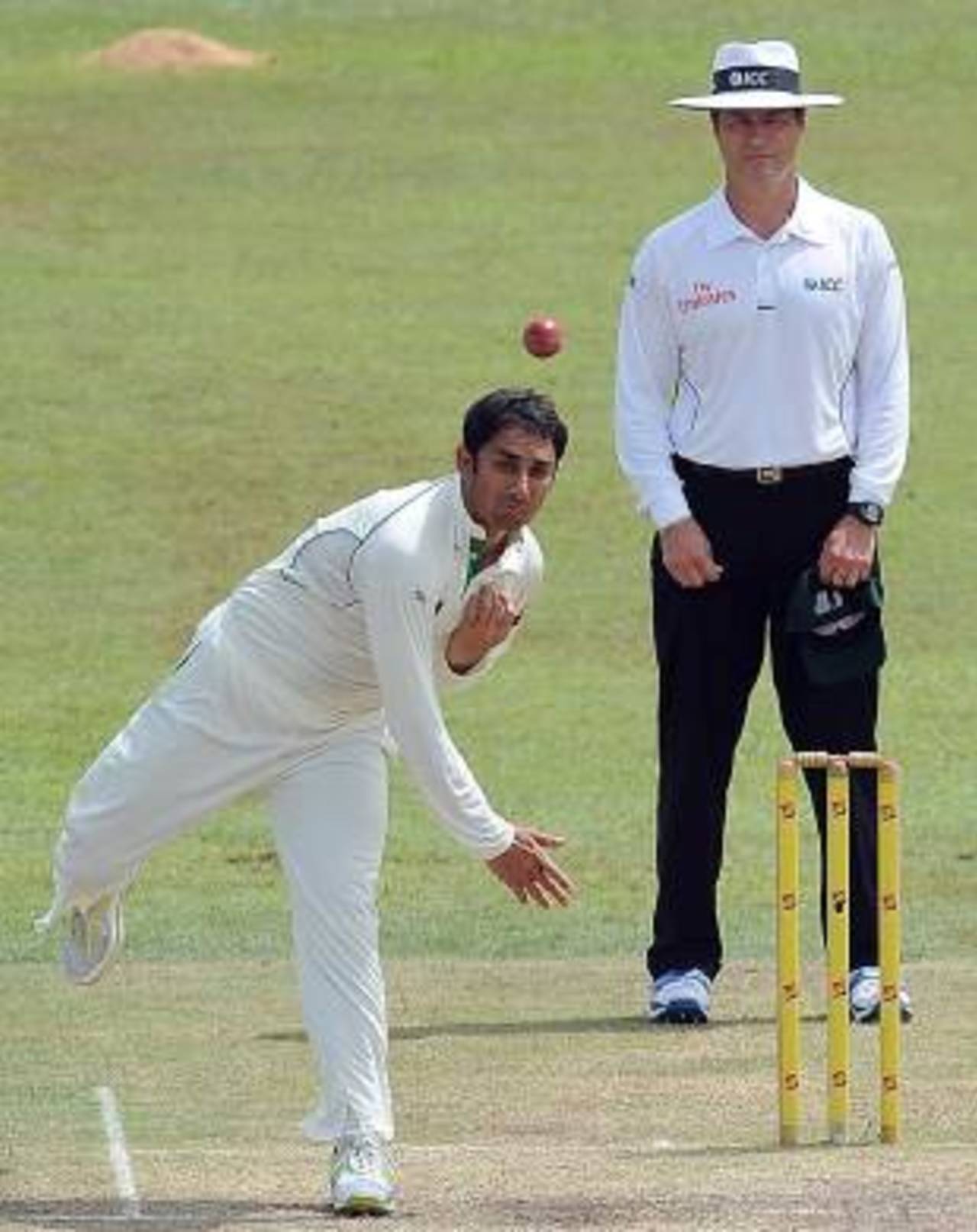Watching Junaid Khan toil singlehandedly at the SSC made one wonder what could have been if the weather didn't have its say or if Junaid had support at the other end. The third and final Test in Pallekele has put Pakistan, currently 1-0 down in the series, in a must-win situation to preserve Misbah-ul-Haq's unblemished record as captain.
Pakistan are yet to lose a series since Misbah took over against South Africa in 2010-11 in the UAE, and the only glitch came in the West Indies last year, where they
lost the first Test at Providence. Pakistan had just one chance to restore their pride, which they did
successfully at St Kitts to draw the series. They find themselves in a similar make-or-break scenario here, and as they strategise, one area worth serious consideration is the composition of their bowling attack.
Junaid, despite his inexperience at Test level, got the ball to talk on an unhelpful pitch at the SSC. With the old ball reversing, the right-handers found it tough to pick him from the round the wicket line, with the likes of Mahela Jayawardene caught in two minds whether to play or to leave. Junaid was unlucky not to get Thilan Samaraweera, but nevertheless set up his dismissal by creating doubts in the batsman's mind before he could get off the mark. Getting both Jayawardene and Samaraweera for ducks at the SSC is an achievement for any visiting team, but for Pakistan to leave a deeper dent, they needed to attack in pairs for sustained periods.
Pakistan had lost the experienced Umar Gul before the game to an ankle injury, thereby increasing the burden on Aizaz Cheema and Junaid. Cheema, who bowled 26 wicketless overs in the match, posed questions with his pace and occasional lift, but couldn't sustain that pressure long enough to fetch wickets. Going by that showing, Cheema would be lucky to keep his place at Pallekele, should a fit Gul return. However, the pitch could give Cheema a lifeline, as it opens the topic of whether Pakistan should play three seamers. There's also Mohammad Sami in the mix.
Both Jayawardene and vice-captain Angelo Mathews expect the pitch to have more bounce and seam movement. Jayawardene skipped the practice session on the eve of the game to rest after a hectic day in Colombo at the Sri Lanka Premier League player draft, but Mathews had a chance to look at the green-top pitch. Both teams were undecided on their playing XIs, more so Pakistan, because they didn't have a chance to look at the pitch before their scheduled afternoon training session. The covers were on after a heavy shower, and Mohammad Hafeez, the Pakistan vice-captain, didn't rule out the possibility of playing three seamers. Naturally, he couldn't make any firm statements until he inspected the pitch.
"We will look into every possibility before making the right decision even if it means having to play three fast bowlers", Hafeez said.
Should Pakistan do so, it will be a deviation from Misbah's tried and tested policy of playing two specialist seamers and three spinners, including Hafeez. The forced exits of Mohammad Asif and Mohammad Amir in 2010 has changed the complexion of Pakistan's Test attack, moving from pace to spin. Since Misbah took over as captain in November 2010, Pakistan have fielded more than two seamers on just four occasions. Not surprisingly, two of those Tests were in New Zealand. The last time they played three seamers was in the Abu Dhabi Test against Sri Lanka in October 2011, an attack comprising Junaid, Cheema and Gul. Since then, the spin trio of Saeed Ajmal, Abdur Rehman and Hafeez has served them well, especially in the UAE. The Pallekele pitch, though, has forced them to rethink.
The question is, if they bring in an extra seamer, who will make way? Ajmal was off colour at the SSC, conceding a century in the first innings. Despite that, he remains an indispensable component. Misbah would know too well not to repeat the mistake of dropping him, especially after the horrors of the fifth one-dayer. Rehman bowled with control, picking up five wickets in the match and was comfortably their best spinner. Bringing in a seamer would mean they would have to bite the bullet and leave out a spinner, or a specialist batsman. The latter is a gamble, as a sporting pitch increases the demands on the batsmen.
This brings the question of the missing component - the seam-bowling allrounder. Sri Lanka have two - Mathews and Thisara Perera, but Pakistan have none at their disposal. Abdul Razzaq has fallen off the selectors' radar and Azhar Mahmood isn't in Pakistan's plans anymore because of his British citizenship and age, even though he has expressed his desire to play for Pakistan again. Hammad Azam had been talked about as a batting allrounder with potential, but he's still too raw at the international level to nail down a spot. More opportunities, at least in limited-overs, will help in his development and a possible graduation to the Test side.
Whatever the combination, Pakistan can recall the St Kitts Test for inspiration in what has been their toughest overseas trip in nearly two years. "We lost the first Test but were also unlucky and what we are looking for now is the best result to have some happiness in the camp before we go home," Hafeez said.
Kanishkaa Balachandran is a senior sub-editor at ESPNcricinfo
